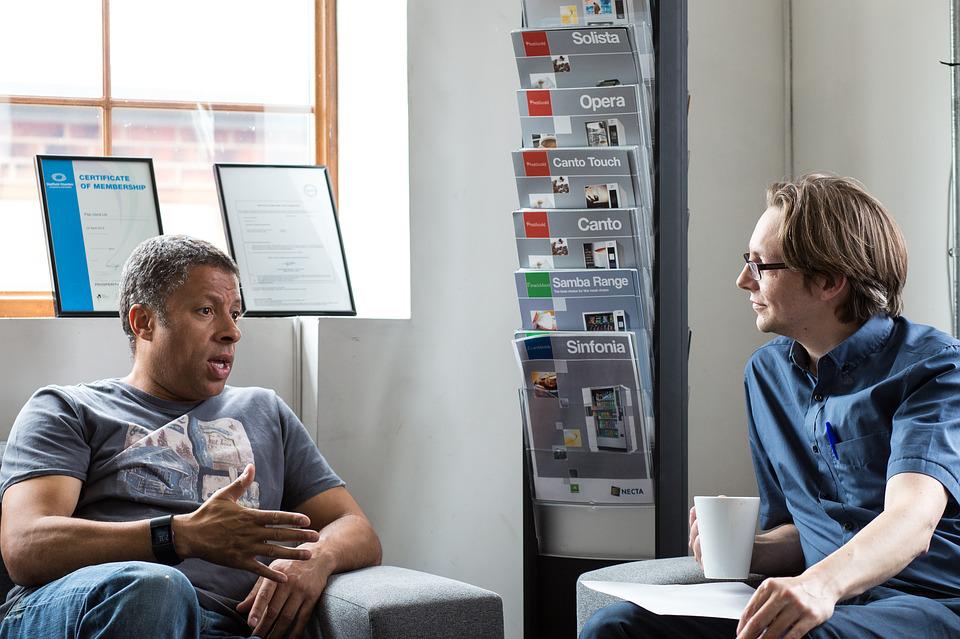-
The Complete Guide to Team Time Tracking

As a team leader, you want your team members to be as productive as possible to make the team (and your overall organization) successful. You also want them to be happy, satisfied workers who don’t struggle with burnout or underappreciation. You can manage both of these concerns with team time tracking.
At one point, we used time tracking only to calculate salaries and paid time off. But in the age of data, time tracking offers numerous additional benefits – for businesses and individual employees. To be competitive, you should take advantage of this powerful technique
In this guide on team time tracking, we explain what it is, how it works, the benefits you can get from it, and how to implement it in your team.
As a team leader, you want your team members to be productive, happy, and satisfied without struggling with burnout or underappreciation. You can manage all of that with team time tracking. Share on X -
How to Recognize Toxic Productivity With Time Tracking

Image source: cookie_studio
It is 8 AM on Saturday, and you already feel anxious because you have a lengthy list of tasks you want to complete. Your team told you to take some time off, but you can’t seem to slow down. Your mind is always racing, so you can’t relax.
This is what it’s like when toxic productivity takes over your life. Your mindset makes you believe that your worth is determined by how much you accomplish. If you are not constantly working, you feel useless. Suffering from toxic productivity can lead to depression, anxiety, and burnout.
Tracking how much time you spend on tasks and projects is a great way to reduce toxic productivity as you can ensure you’re not wasting time on unimportant work. It helps you reach your goals faster and with less stress. You can use your downtime to rest and recharge to become even more productive when you return to work.
Automatic time tracking tools, such as Timing for macOS users, help you track how much time you spend on various tasks to see which ones are taking up most of your time.
Timing helps you focus on what’s important instead of wasting time on non-essential tasks. It shows you a detailed breakdown of where your time goes throughout the day to identify any blind spots in your workflow, so you can adjust accordingly.
When you keep track of your time, you’ll be able to identify patterns in your work day and understand how to improve your productivity and efficiency.
Timing also helps you gain a sense of control over your work life and provides you time tracking data you can use for both personal and professional development. To see how it works, download Timing today and start your 30-day free trial.
Toxic productivity and being productive are two completely different things. In today’s article, we will provide the information you need to recognize and overcome this challenge. We will also explain how Timing helps you reduce the need for constant productivity. Let’s start with some basics.
Read More… -
The Importance of Time Recording for Team Efficiency
Many teams agree that time recording is essential in improving productivity and efficiency. However, they usually avoid tracking work hours. It feels like a burden to record time manually since it disrupts their work days, takes up additional time, and results in inaccurate reports.
In the long run, avoiding time recording will do far more harm than good for your team since the average employee faces more than 50 distractions daily, while multitasking makes them 40% less productive.
You can use automatic time tracking software such as Timing to overcome these challenges and improve operational efficiency and team effectiveness. This can facilitate team coordination in general.
Timing automatically tracks time for your team, helping them do their jobs without interruptions. They can freely switch between tasks without worrying about starting and stopping timers.
Timing enables you to understand team capacity, improve time, resources, project management, and increase project profitability by keeping your team on track.
Timing also preserves your team members’ privacy by showing the aggregate project time record without personal details. You can get an overview of the time spent on each project to make necessary improvements. To see how it works, download Timing and start tracking time with a 30-day free trial.
In today’s article, we will explain the importance of time recording for team efficiency and show how to use Timing to achieve your business goals. Let’s start with some general information on time recording.
Read More… -
How to Track Employee Time Effectively: Manual vs Automatic Time Tracking
To track or not to track… That was the question.
Not anymore.
To track manually or automatically – that is the question of today’s importance. Because of poor time tracking habits and, consequently, untracked time, US companies lose $8.8 billion per day.

Image author: Annie Spratt
Businesses still face burdensome disagreements around employee work hours and struggle to decide how to monitor the latter efficiently. Let’s take the controversy around old-fashioned paper timesheets vs digitally-driven solutions for worker time monitoring.
Are you still using paper timesheets or have you already switched to digital methods and productivity apps?
You’ll definitely change your mind in favor of automatic tools after reading this article. Dive in.
-
The Top Hard and Soft Freelancing Skills You Should Spend the Time to Develop

As a freelancer, you’re in charge of everything, including your own personal development. No one will force you to attend classes, take courses, study new techniques, or practice new skills. That all falls on you.
If you’re thinking, “I don’t need to improve; I already know how to do my job,” you’re making a serious mistake. There is always something new to learn, some new way to improve yourself and the work you perform for your clients. To be competitive and find reasons to raise your rates, you must continually develop your skills.
But which skills should you improve? We can help with that. This article lays out the top freelancing skills that will help your career.
-
10 Ways to Improve Poor Time Management
Poor time management is detrimental to productivity and brings more stress to work. It is proven to affect work-life balance and relationships with colleagues. Statistics show that the average person tries to solve this problem using 13 different time management methods.
Timing, our automatic time tracking tool for macOS users, helps you overcome this issue. It records your time down to the second and helps you become more productive and efficient.
With Timing, you get reports on your activities which allow you to identify distractions and take measures to improve your time management. To start tracking your time automatically, without having to remember to start and stop timers manually, download Timing today and use a 30-day free trial to test all features.
Today we will discuss the signs that tell if you fall victim to common time management mistakes. We will also give you ten tips to fix these issues, become more productive and efficient, reduce stress, and improve your overall well-being.
We will also explain how time tracking helps identify time management problems and provides data-based insights on potential improvements. Finally, we will present nine ways Timing enables you to combat poor time management.
Before we share our ten tips to improve your time management, let’s explain why that is important.
-
10 Ways to Overcome Time Anxiety Using Time Tracking
Modern-day urban life can be hectic. Millions of people are constantly busy and always in a hurry. They race against time, which can have long-term effects on their physical and mental health.
A typical response to this situation is to feel overwhelmed, stressed out, and worried that there is not enough time for what we want to do. It is called time anxiety, affecting more or less everyone juggling multiple professional and personal activities.
Good time management is an antidote to time anxiety. To manage your time, you must first understand how you spend it throughout the day. Automatic time tracking tools, such as our Timing for macOS users, provide detailed reports of your activities. With Timing, you don’t have to remember to start, pause or stop timers since it records your time automatically.
You can track time to the second and use the recorded data to identify distractions and productivity issues in your daily work. Timing helps you understand where your time goes and gives you complete control over the deep-level data you can’t gather with manual time tracking. What’s best, you can download Timing and start a 30-day free trial today.
In this article, we’ll discuss the reasons for time anxiety and how it affects your mental health. We’ll also explain how time tracking helps you overcome time anxiety and focus on meaningful activities. Before we share our tips for overcoming time anxiety, let’s define what it is.
-
Freelancing Red Flags: 16 Signs to Abandon That Problem Client

Freelancing is more popular than ever, which means more people and businesses are using freelancers to meet their needs. It’s a tremendous time to be a freelancer as nearly every industry is embracing this work model, especially since the pandemic.
But while many of your client relationships are healthy, productive, and lucrative, some just aren’t worth the trouble. As a freelancer, it’s smart to identify your problem clients and abandon them quickly. The sooner you call it quits with a bad client, the sooner you can start working with a good one.
How do you predict if a client will be a problem? By looking out for red flags that indicate the arrangement won’t be pleasant for you. This article lays out the top freelancing red flags and what to do if you spot them.
Read More… -
Should You Call Yourself a Freelancer? Why Your Title Might Be Holding You Back

The words you use to describe yourself matter. Words affect your personal brand. They influence people’s perception of you, especially when a few words is all they know about you. If you want to be a successful freelancer, you need to be thoughtful with the words you use to describe yourself and your work.
The words we speak aloud can even affect our own brains. Simply introducing yourself to a client can change the way you view yourself. If you refer to yourself as an experienced professional, eventually, you will start to think of yourself as such. But if you refer to yourself as an amateur or newbie, that’s exactly what you’ll be.
Self-perception is important because words can influence your own mood and behavior. Having repetitive negative thoughts can activate the brain’s fear center. If you think of yourself as an imposter who lacks control over their work and career, you’ll present that message to clients and prospects through your behavior and language.
Your title is one of the first pieces of information that prospective clients learn about you. It should tell clients who you are and how you can help them. This begs the question: Are you introducing yourself properly? Does it make sense to call yourself a “freelancer,” or is there a different way to set the stage for client relationships?
In this article, we help you understand whether it makes sense to call yourself a freelancer or if a different term is more suitable for your career.
-
Why (and How) You Should Schedule Time For Your Relationship
Time tracking is for work… right? Think again. While it might seem unromantic to schedule time with your significant other, it can actually be the opposite.
Do you remember the early days of your relationship, when you would move earth and heaven to make a date work? It didn’t matter if you were tired from work, just back from a trip, or had something else that mysteriously ‘just happened’ to get rescheduled, if you were really excited about someone you would make time to see them. What about now? Do you still make time for your partner?
As February is the month of Valentine’s, it’s a good excuse to think about your lovelife — whether you subscribe to the idea of Valentine’s Day or not. Regardless if you’ve been together six months, a year, or married for ten, chances are you’ve fallen into a rut or five. Particularly if you live together, chances are you’re spending a lot of time in each other’s company without actually being together. Overtime, this will naturally lead to dissatisfaction in and the breakdown of your relationship.
Aside from not wanting to lose your loved one, why is it important to work on being happy and present in a relationship? Well, studies show that when you’re in a fulfilling relationship, everything in life is better — from your performance at work to your cardiac health. We’ve come up with five different ways you can schedule time in your relationship, for a happier relationship and happier life.
Read More…
